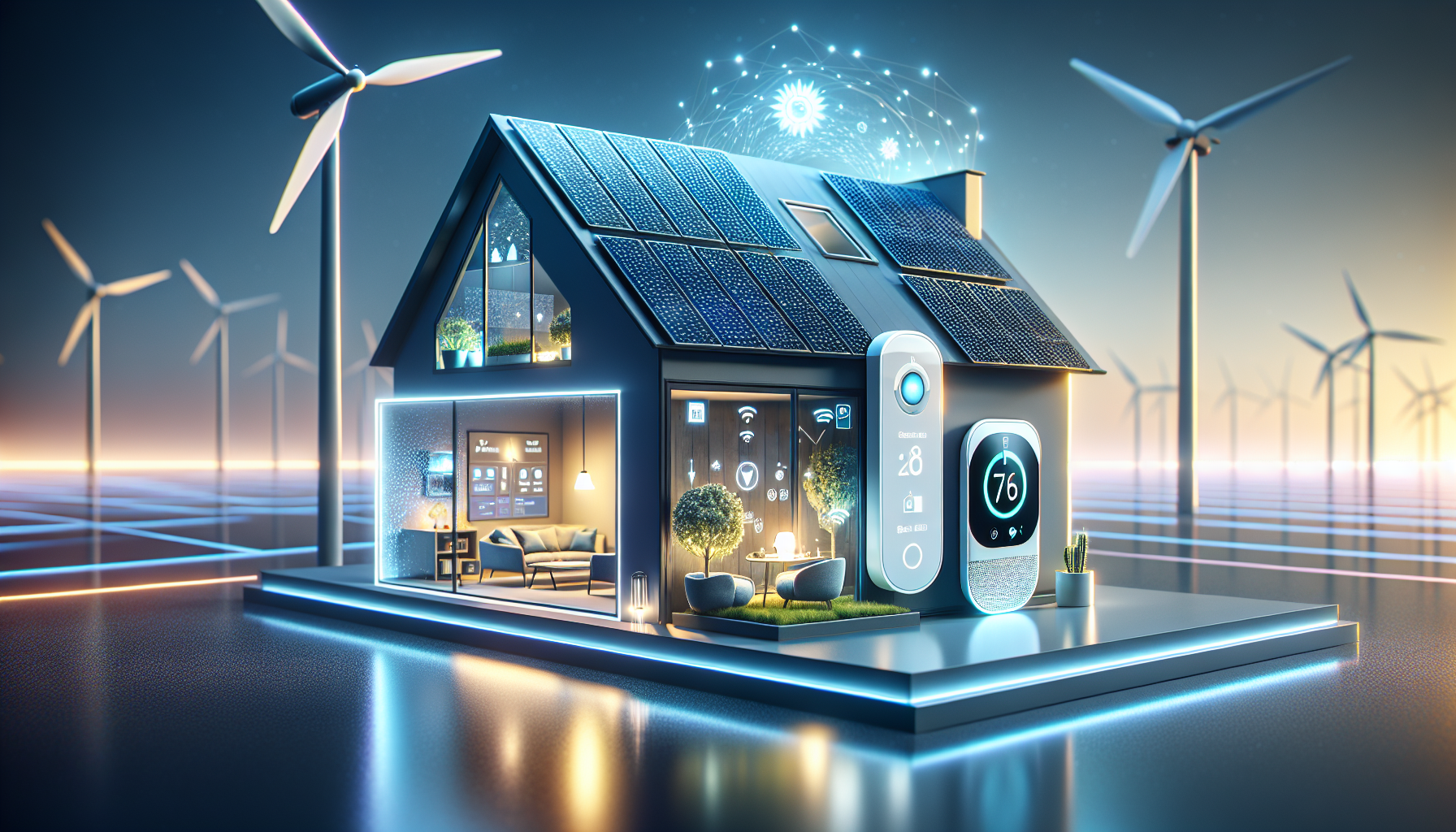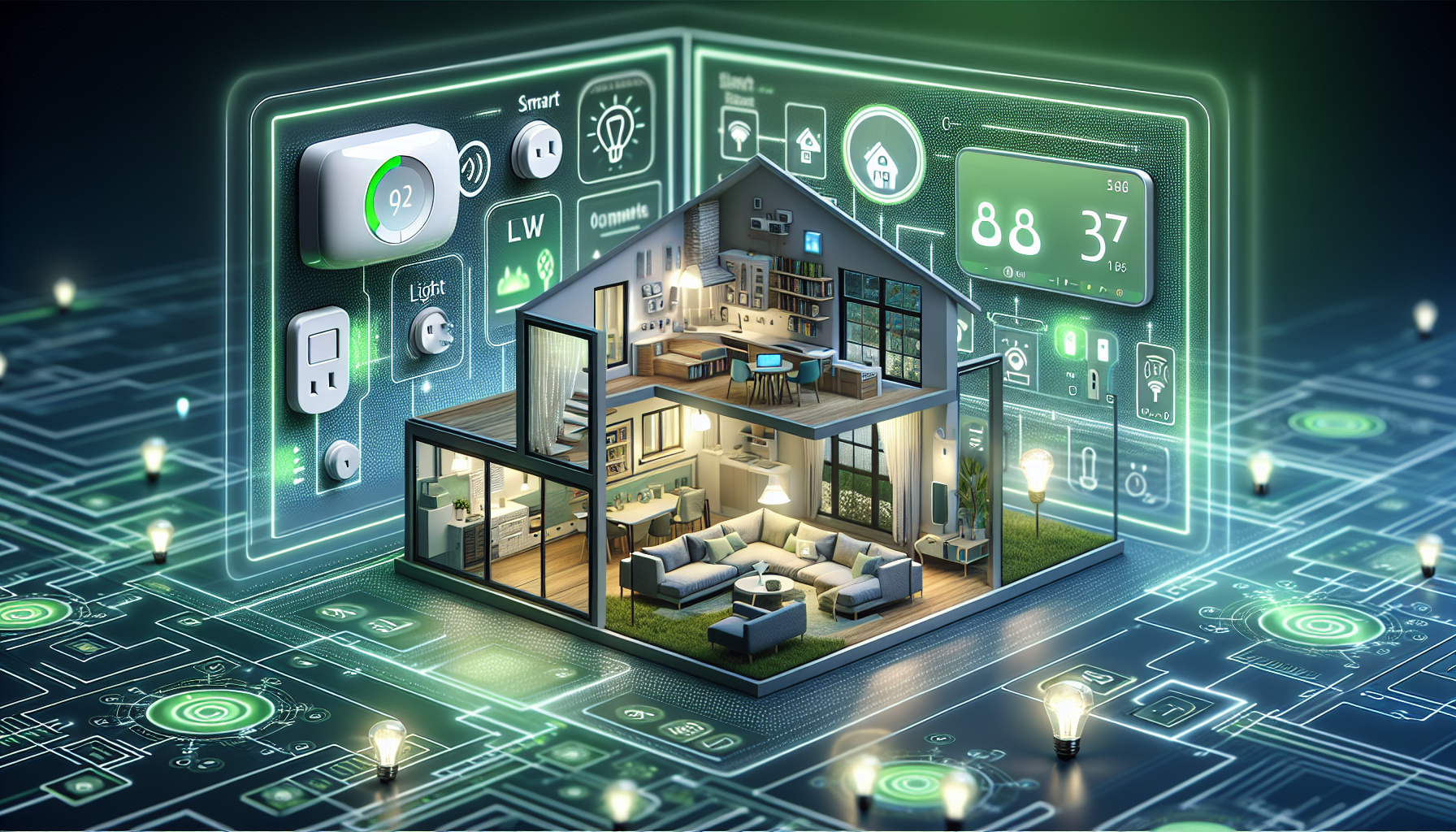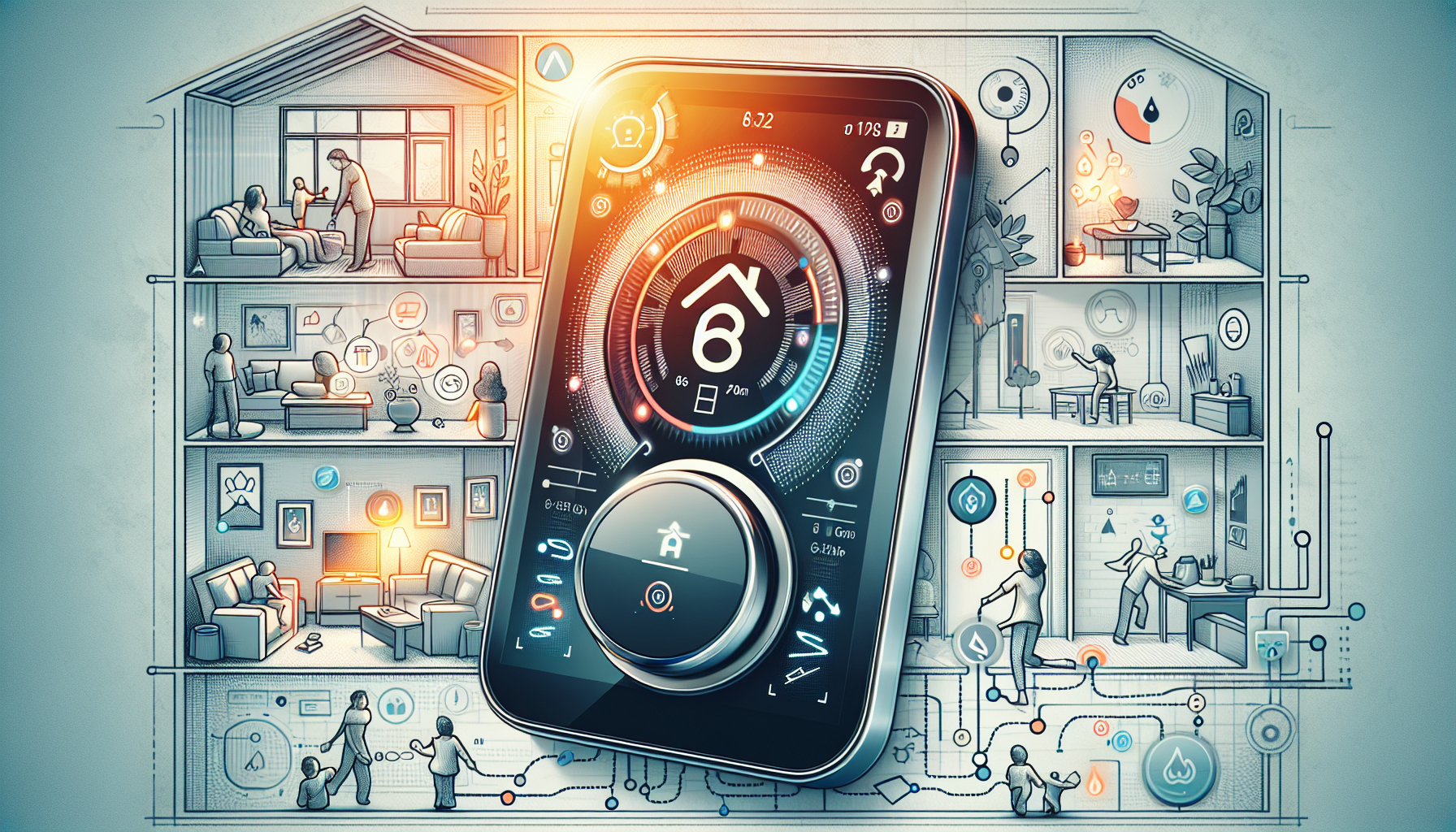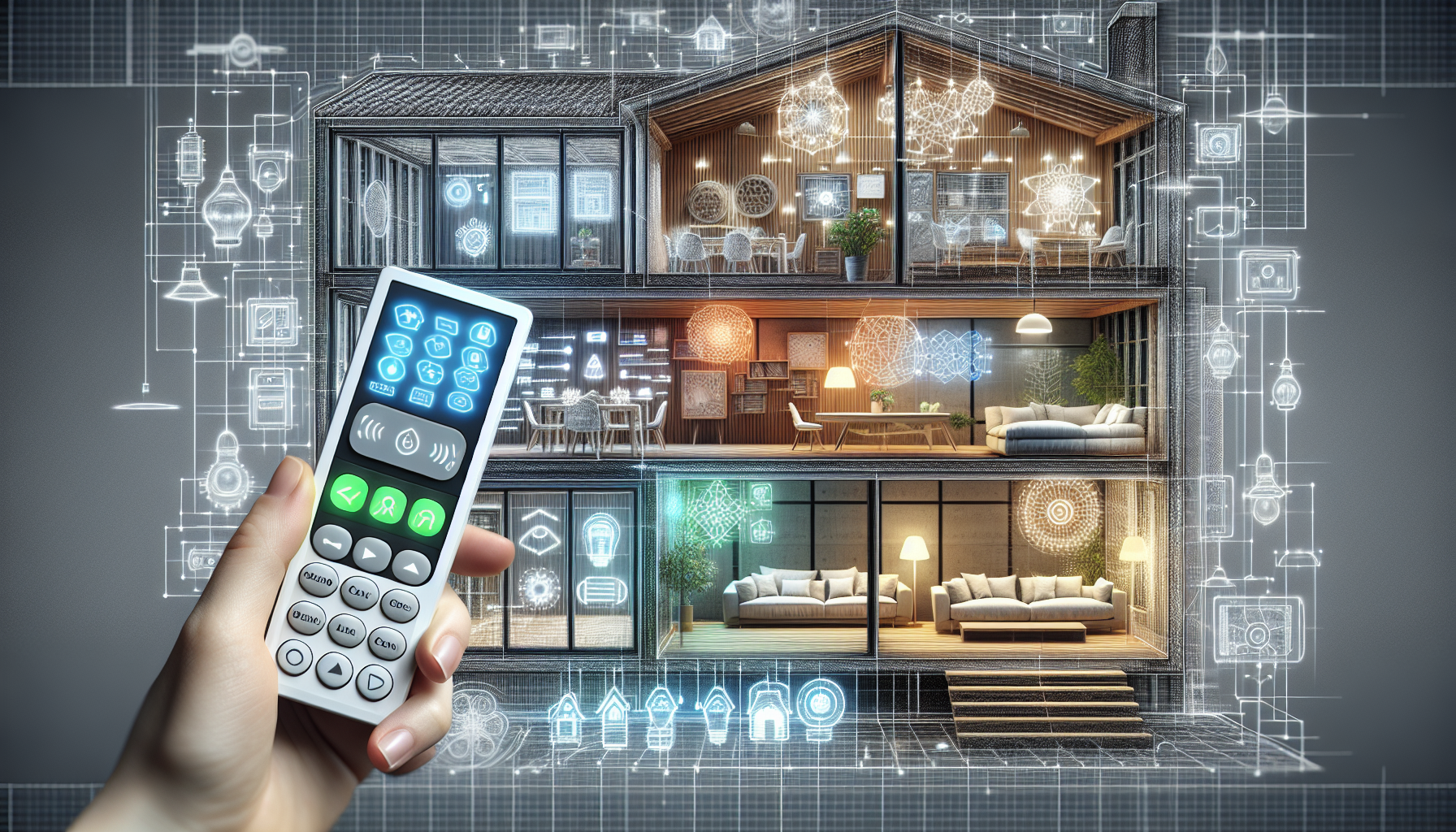The Role of Smart Home Technology in Reducing Energy Consumption: Practical Ways to Save
Smart home technology is transforming the way we consume energy, offering practical solutions to reduce utility costs and lower our carbon footprint. The role of smart home technology in reducing energy consumption is significant, as it includes innovations such as smart thermostats and energy-efficient lighting that make it easier to monitor and manage energy use. This article covers the essential components and benefits of smart home systems in promoting energy efficiency.
Key Takeaways
-
Smart home technology plays a crucial role in optimizing energy consumption and promoting environmental sustainability by allowing remote control of home systems and providing real-time energy usage data.
-
Key components of an energy-efficient smart home include smart thermostats, LED lighting, smart plugs, and smart appliances, all of which help reduce energy consumption and costs through automation and scheduling.
-
Challenges in adopting smart home technology include the high initial investment costs, compatibility issues among different devices, and security and privacy concerns, although long-term energy cost savings and increased efficiency can justify the investment.
0 Introduction

Smart home systems are revolutionizing how we manage energy consumption in our homes. By employing automation, connectivity, and efficient design, these systems promise a more sustainable and energy-efficient lifestyle. The convenience of a smart home system includes being able to:
-
Monitor and control energy usage remotely
-
Adjust temperature settings and lighting
-
Manage appliances and electronics
-
Receive real-time energy usage data
One significant advantage that smart home technologies offer is their integration with smart technology.
The need for energy savings and reducing carbon footprints has driven the evolution of smart home technology. As we shift towards renewable energy sources and aim to reduce carbon emissions, smart home systems have become essential in promoting environmental sustainability. This shift underscores the importance of adopting smart home technologies to achieve a greener future.
Evolution of Smart Home Technology
The journey of smart home technology began with basic home automation systems designed to enhance convenience and security. Over time, these systems have evolved into advanced, energy-efficient solutions that focus on optimal energy use and environmental sustainability. The initial stages of smart home technology were marked by the introduction of simple automation devices that could control lighting and security systems.
With the advent of smart devices like smart thermostats and smart lighting systems, the landscape of home technology began to change. These devices, which use low-energy LED bulbs and automated control, started to dominate discussions about energy efficiency. The ability to control various functions remotely through mobile apps marked a significant advancement in smart home systems.
The driving force behind this evolution has been the need to reduce reliance on fossil fuels and minimize carbon emissions. By integrating renewable energy sources and focusing on energy-efficient appliances, smart home technologies have become a critical component in the broader movement towards environmental sustainability.
Key Components of Energy-Efficient Smart Homes

An energy-efficient smart home is built on several key components that work together to optimize energy usage and minimize waste. One of the most crucial elements is the smart thermostat. These devices learn from user habits and preferences to automatically adjust heating and cooling schedules, ensuring that energy is used efficiently.
LED lighting is another essential component of an energy-efficient smart home. Here are some benefits of LED lighting:
-
LED lights consume significantly less energy compared to traditional incandescent bulbs
-
LED lights can be easily integrated into smart lighting systems
-
LED lights often come with features like remote control and scheduling, which help reduce overall energy consumption.
Smart plugs are also vital in managing energy usage. These devices can be programmed to control the energy consumption of connected devices, allowing for better energy management and reduced waste.
By incorporating these components, smart homes can achieve significant energy savings and contribute to a more sustainable future.
Smart Thermostats: Optimizing Heating and Cooling

Smart thermostats are a game-changer when it comes to optimizing heating and cooling in homes. These devices learn from user habits and preferences to automatically adjust heating schedules, ensuring that energy is used efficiently. By controlling heating and cooling equipment based on household habits and occupancy patterns, smart thermostats contribute significantly to energy efficiency.
One of the standout features of smart thermostats is their ability to be controlled remotely via smartphones or tablets. This provides homeowners with the convenience and flexibility to:
-
Manage home temperatures from anywhere
-
Reduce the need for heating and cooling when no one is at home
-
Adjust to energy needs on the fly with programmable features.
Geolocation is another innovative feature that enhances energy efficiency. Smart thermostats can turn heating on just before you return home, ensuring comfort while saving energy. Some systems offer zonal control, enabling different temperatures to be set for different rooms, further optimizing energy use.
The energy savings achieved with smart thermostats are substantial. Early users of Nest smart thermostats reported cutting 10-12% off heating and 15% off cooling per year, leading to average savings of about $131 to $145 per home annually. Overall, smart HVAC systems, which include smart thermostats, can save up to 10% of energy consumption in homes.
Smart Lighting Systems for Reduced Energy Use

Smart lighting systems are an effective way to reduce energy consumption in homes. Smart bulbs, which connect to WiFi networks, can be programmed to turn on and off, adjust brightness, and even detect when you’re headed home to turn the lights on automatically. This level of control and automation contributes significantly to energy savings.
Another key feature of smart lighting systems is their ability to automate based on occupancy and natural light availability. For instance, lights can be scheduled to turn off when no one is in the room or adjust brightness levels based on the amount of natural light available. This ensures that energy is not wasted on unnecessary lighting.
The potential energy savings with smart lighting systems are impressive. Studies have shown that these systems can save between 7% and 27% of a home’s lighting energy use. By integrating smart lighting into your home, you can achieve significant reductions in energy consumption and costs.
Role of Smart Meters in Energy Management
Smart meters play a crucial role in energy management by providing real-time data on electricity usage. These devices capture detailed information on energy consumption, load, and time of use, allowing homeowners to monitor their energy usage patterns closely. This data is then transmitted to energy management platforms for analysis, enabling informed decisions about energy use.
One of the significant advantages of smart meters is their bidirectional communication capability. This allows for remote operations such as setting parameters and troubleshooting, making energy management more efficient. By providing real-time information on energy consumption, smart meters encourage users to adopt more energy-efficient practices.
Smart Appliances for Efficient Energy Use
Smart appliances are designed to enhance energy efficiency by:
-
Adjusting their operations based on user preferences and sensor data
-
‘Learning’ when they are used and incorporating the ability to save energy when not in use
-
Optimizing their performance to reduce energy consumption
One of the key benefits of smart appliances is their ability to be controlled remotely using smartphones. This allows users to operate appliances during off-peak electricity hours, further reducing energy costs. Integration with smart home ecosystems also enables appliances like washing machines to sync with other devices, optimizing overall home energy usage.
Smart appliances provide real-time updates and notifications, making it easier for homeowners to manage tasks and reduce energy wastage. For example, smart washing machines offer advanced diagnostics to detect issues early and send alerts via mobile apps, aiding in preventive maintenance and reducing costly repairs.
The cost savings achieved with smart appliances are notable. By optimizing washing cycles and water usage, these appliances contribute to sustainability and reduce energy costs for households by 2-9%.
Automation and Scheduling for Energy Savings
Automation and scheduling are key features of smart homes that contribute to significant energy savings. By proactively managing energy consumption based on the time of day and occupancy patterns, smart home systems ensure that energy is used efficiently. This includes automatically adjusting heating and cooling settings and managing electronic devices through mobile apps.
Smart home functionalities can be tailored to schedules and occupancy, minimizing energy waste. For instance, smart lighting systems can be paired with devices like thermostats and security systems to enable energy-saving away modes. This level of automation ensures that energy is not wasted when no one is home.
Research has shown that home automation can lead to substantial energy savings. A study from Finnish researchers found that automation could save 12.78% of original carbon emissions. Homeowners using smart thermostats and energy monitoring systems often experience a reduction in utility bills ranging from 5% to 22%.
Integration with Renewable Energy Sources
Integrating renewable energy sources with smart homes further enhances energy efficiency and reduces reliance on fossil fuels. Solar panels, for instance, can be integrated into smart homes to allow real-time monitoring of energy generation and consumption. This integration ensures that energy is used optimally and sustainably.
By combining solar panels with solar batteries, homeowners can:
-
Store excess energy for later use
-
Reduce dependency on the grid
-
Use stored energy during peak times or when solar generation is low
-
Ensure a continuous supply of clean energy.
Additionally, smart appliances can be programmed to operate when the home’s solar energy system has generated sufficient wattage. For example, smart washing machines can switch on when excess solar energy is available, optimizing energy use and reducing costs.
Installing EV charging stations at home allows the use of excess energy stored by solar panels for vehicle charging, further promoting sustainable practices.
Real-World Examples of Energy Savings
Real-world examples highlight the significant energy savings achieved through smart home technology. Some households have reported up to a 50% reduction in plug load energy consumption by using smart home devices. These examples showcase the potential of smart home technology to transform energy consumption habits and promote sustainability.
In Australia, companies like Cyanergy are helping the nation become carbon neutral while cutting down energy bills. By adopting smart home technologies, homeowners can achieve substantial energy savings and contribute to a greener future.
Challenges and Considerations
While the benefits of smart home technology are clear, adopting these systems comes with its own set of challenges. One of the most significant barriers is the initial investment cost. Even simple configurations can cost over $1000, making it a substantial financial commitment for many homeowners. However, the long-term savings in energy bills, reduced maintenance costs, and increased efficiency can outweigh these upfront expenses.
Compatibility issues also pose a challenge. The lack of universal standards for communication protocols among smart home devices can lead to compatibility problems, making it difficult for users to integrate different technologies seamlessly. Additionally, the complexity of smart home systems, including the need for user-friendly experiences and time-consuming programming requirements, can deter some potential adopters.
Security and privacy concerns are also significant considerations. Consumers worry about data breaches and unauthorized access to their smart home systems, which can affect their confidence in these technologies. Despite these challenges, the long-term benefits of energy efficiency, convenience, and sustainability make smart home technology a worthwhile investment for many homeowners.
Summary
In summary, smart home technology plays a crucial role in reducing energy consumption and promoting environmental sustainability. By leveraging automation, connectivity, and efficient design, smart homes can significantly lower energy usage and minimize carbon footprints. Key components such as smart thermostats, LED lighting, and smart plugs work together to optimize energy use and reduce waste.
As we move towards a greener future, adopting smart home technologies becomes increasingly important. Despite the challenges of initial investment costs, compatibility issues, and security concerns, the long-term benefits of energy efficiency, convenience, and sustainability make these technologies a valuable addition to any home. Embracing smart home technology not only enhances our quality of life but also contributes to a more sustainable world.
Frequently Asked Questions
What is a smart home?
A smart home uses automation and connectivity to optimize energy use and enhance convenience and security, promising more efficient energy use and significant energy savings while minimizing carbon footprints.
How do smart thermostats save energy?
Smart thermostats save energy by learning from user habits, adjusting heating and cooling schedules automatically, and allowing remote control for added flexibility and convenience in managing home temperatures.
What are the benefits of smart lighting systems?
Smart lighting systems offer benefits such as remote control, scheduling, and energy savings by adjusting brightness based on occupancy and natural light availability. They can also turn off lights in unoccupied rooms, contributing to significant energy use reduction.
Are smart appliances worth the investment?
Investing in smart appliances is worth it as they optimize operations, save energy and costs, and can be controlled remotely to enhance energy efficiency.
What are the challenges of adopting smart home technology?
The challenges of adopting smart home technology include initial investment costs, compatibility issues, and security concerns. However, despite these challenges, the long-term benefits of energy efficiency, convenience, and sustainability make smart home technology a worthwhile investment.








